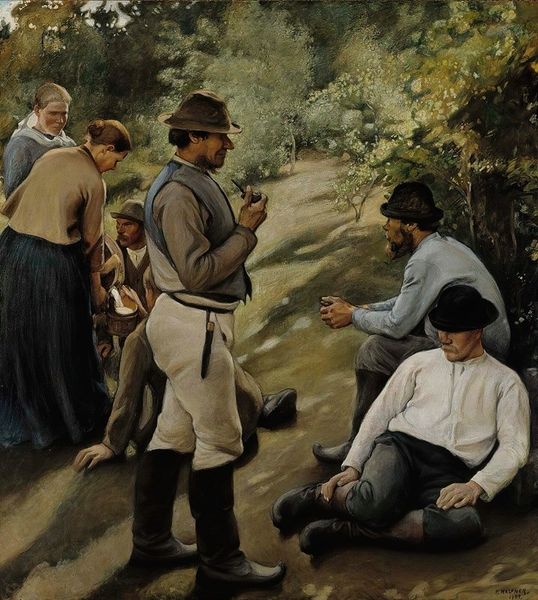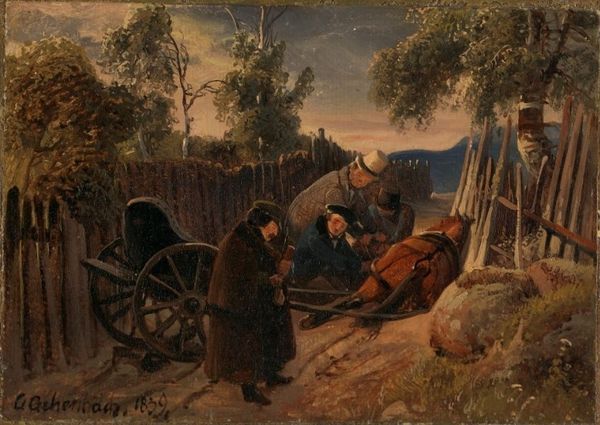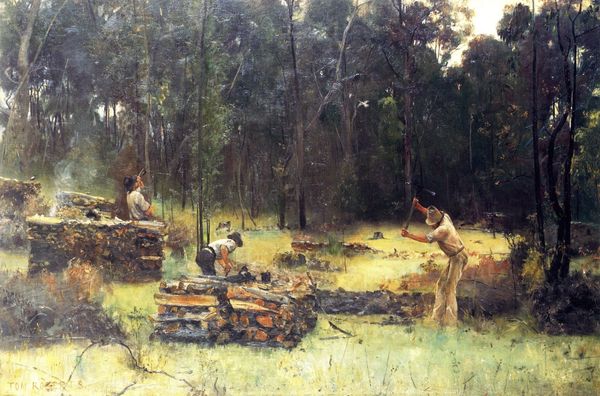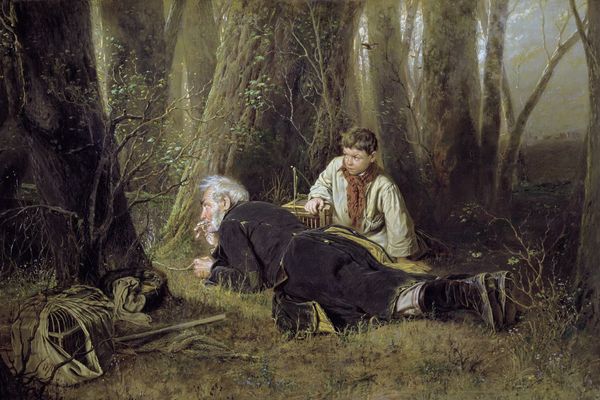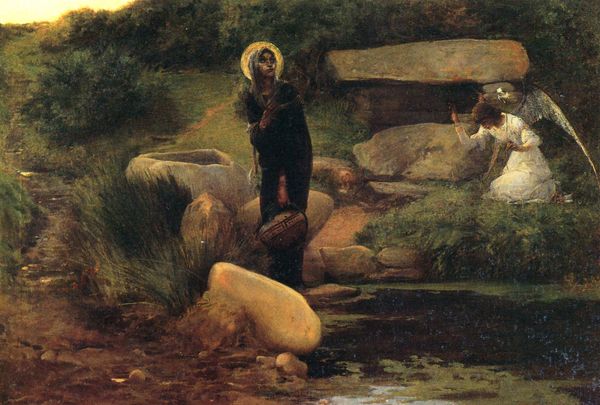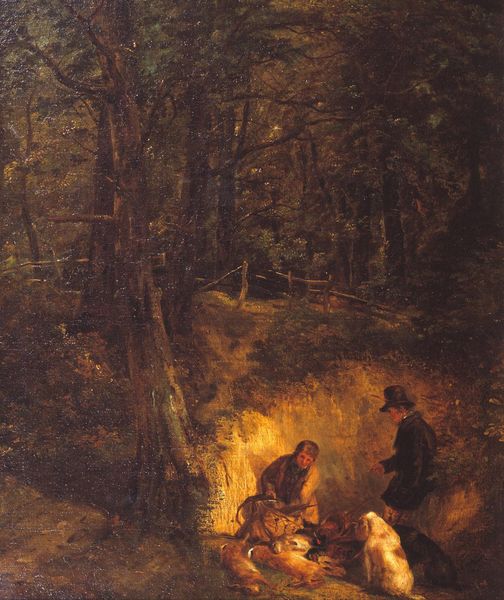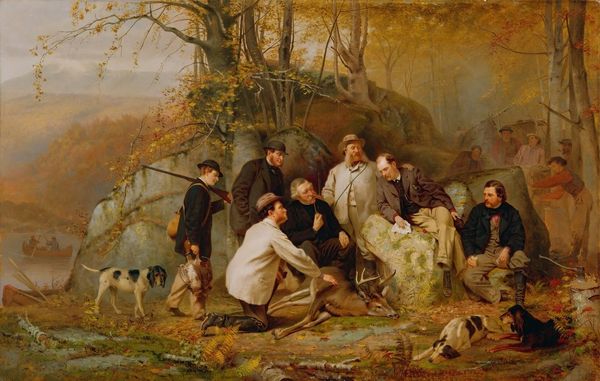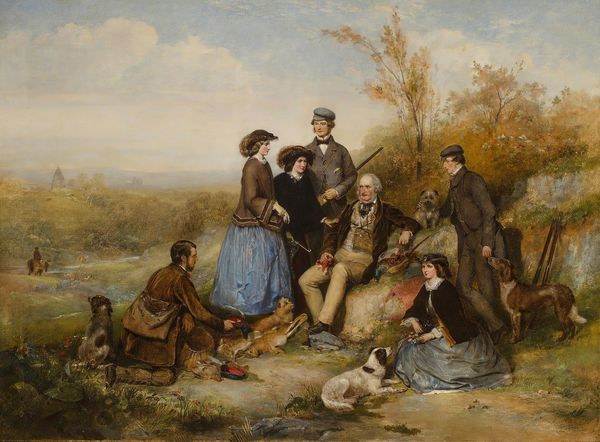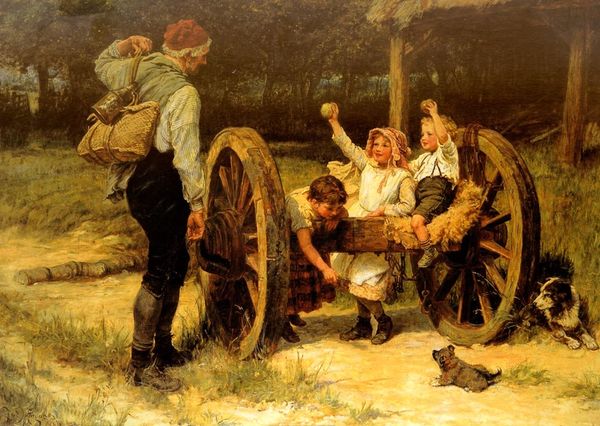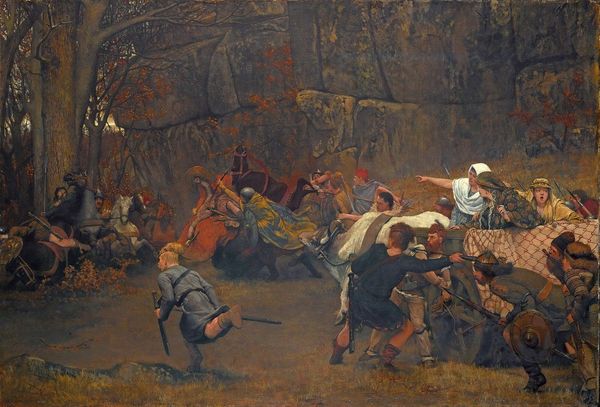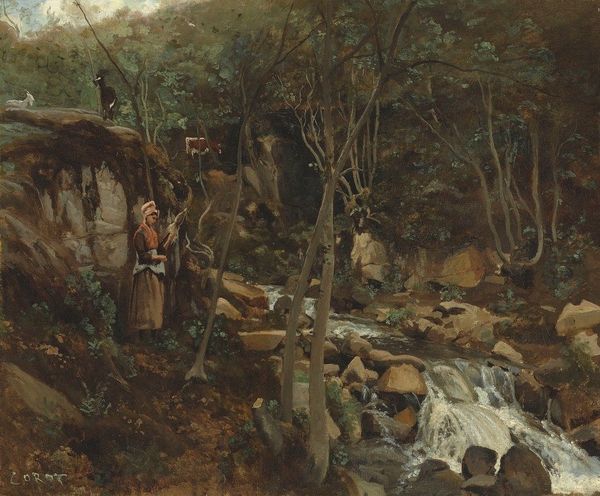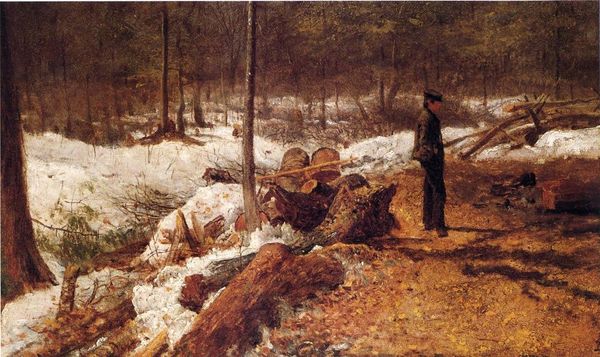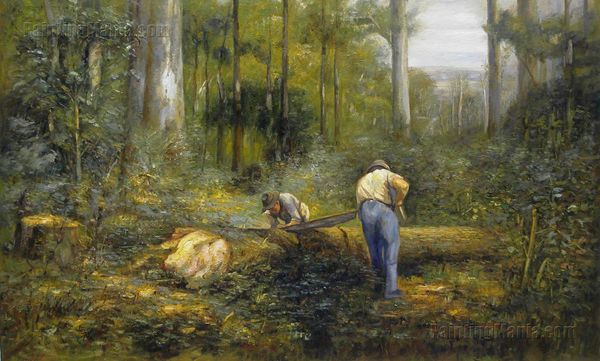
Copyright: Public domain
Curator: Frederick McCubbin’s oil on canvas, "A Bush Burial," created around 1890, offers a glimpse into the stark realities of life in the Australian outback. Editor: Immediately, I'm struck by the subdued palette—ochre, umber, and muted greens—that contributes to the overwhelming somber mood. The artist's loose brushstrokes evoke a landscape of grief. Curator: This painting emerged during a period of significant social and economic change in Australia, capturing the isolation and hardships faced by early settlers. It really speaks to the precariousness of existence in a harsh environment and reflects McCubbin’s concerns with national identity. Editor: I see how the composition itself heightens the sense of melancholy. The figures clustered around the shallow grave are visually isolated, dominated by the vast, indifferent Australian bush that serves as an enormous and unsympathetic backdrop. Curator: Absolutely. The location for a grave would most likely be in the remote areas of bushland, devoid of communal gathering spots like established cemeteries or centralized memorials of some type. A bush burial therefore signifies profound displacement from ordered, collective existence. Editor: Look closely. The rawness of the earth and exposed roots draw attention to material instability, a reminder that every body returns to its fundamental, organic state. Even the muted light feels heavy, like a shroud draped over the scene. Curator: In this context, the painting participates in shaping the national narrative—it tells a story about resilience, community, and the stoic acceptance of hardship, all defining elements in the construction of Australian identity. Editor: Thinking about McCubbin's technique, the figures and landscape all seem composed from discrete layers of brushstrokes. Are these people simply transient visitors to a pre-existent wilderness, destined to be enveloped back into it? Curator: Yes, precisely. The symbolism of that narrative extends beyond this scene. McCubbin places his focus on universal human experiences through the painting: mourning, mortality, and the delicate relationship between humanity and nature. Editor: Considering the pictorial language, the grief is so thick in the composition. But while the experience is visually sorrowful and the setting evokes the landscape, McCubbin manages to visually memorialize loss with reverence. Curator: In conclusion, “A Bush Burial” allows us to see into a defining, early image of what Australia would grow to be while capturing something profound about the human condition itself. Editor: Indeed, the work's enduring power resides not just in the depiction of historical moment, but in its profound meditation on mortality set in earth tones on an evocative scene.
Comments
No comments
Be the first to comment and join the conversation on the ultimate creative platform.
